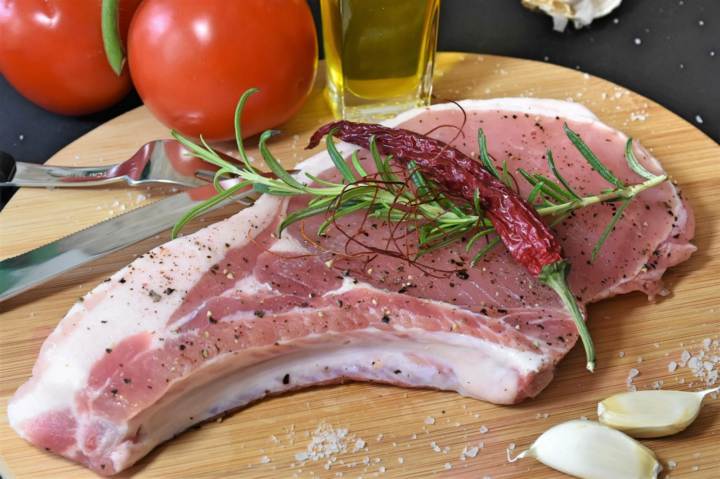How to Assess Meat Quality: A Health-Conscious Guide
As health-conscious individuals, we strive to make informed decisions about the food we consume, particularly regarding meat. The quality of meat can greatly impact the taste, nutritional value, and safety of what’s on our plates.
Whether you’re committed to a carnivore diet or transitioning into a more plant-based diet, understanding how to assess meat quality is essential for any healthy eater. This blog post will explore how to differentiate meat quality levels and make informed choices at the grocery store or butcher shop.

1. Appearance Matters
When assessing meat quality, you should first pay attention to its appearance. The color and texture of meat can reveal a lot about its freshness and nutritional value. Ideally, the color of fresh meat should be bright red or pink, depending on the type of animal. Avoid any grayish or brownish cuts, as they may indicate that the meat is not fresh or has been exposed to air for too long.
Additionally, pay attention to the marbling, which refers to the amount of fat dispersed throughout the muscle tissue. A good-quality cut of meat should have a moderate amount of marbling, as it adds flavor and juiciness. Any discoloration, odd smells, or an excess of liquid could indicate poor quality or spoilage.
2. Understanding Labels
Labels can be a helpful tool when it comes to assessing meat quality. Look for terms such as “organic,” “grass-fed,” and “free-range.” These labels indicate that the animal was raised in better living conditions, producing higher-quality meat.
However, keep in mind that these labels are often used interchangeably and may not always be regulated by the USDA, so don’t rely solely on them. And for those curious about the keto-friendliness of certain meat products, such as beef jerky, additional insights can be found in this informative article by Mahogany Smoked Meats.
Another vital label to look for is the USDA quality grade. This system grades meat based on its maturity, marbling, and color. When buying boudin sausage online, look for a USDA Prime or Choice grade to ensure a high-quality product. The highest grade is Prime, followed by Choice and Select. These grades can be a helpful guide when choosing between different cuts of meat within the same type and price range.
3. Sourcing Matters
The quality of your meat depends on its source, so consider where it comes from. When buying from a local butcher, inquire about the meat’s origins; reputable butchers usually prioritize animal welfare and sustainable practices in their sourcing. Research the company’s sourcing practices if purchasing meat online, like boudin sausage.
Look for businesses that transparently share their suppliers or information about specific farms. Remember, meat from animals raised in high-welfare environments, fed a natural diet and allowed plenty of exercise often yields superior quality and flavor. Remember to consider the impact of ethical and sustainable sourcing on the overall quality of your meat.
4. Processing and Additives
Watch out for the processing and additives that might be present in your meat. Many processed meats, such as sausages or cold cuts, may contain high sodium levels, preservatives, and other additives to enhance flavor and prolong shelf-life. While these may increase the product’s appeal, they can also have detrimental health effects when consumed excessively.
Therefore, select products with minimal additives and preservatives when selecting processed meats like boudin sausage. Read the ingredient list carefully and avoid products with a litany of unrecognizable ingredients. Prioritizing naturally processed and additive-free products ensures you consume better quality and potentially healthier meat.
5. Price as an Indicator
While price should not be the sole determinant of quality, it can often serve as a useful indicator. Higher-priced meats are often synonymous with better quality due to the costs associated with ethical farming practices, organic feed, and humane slaughtering processes. It’s essential, however, not to be swayed by price alone.
Consider other factors mentioned above, as a high price doesn’t guarantee superior quality. Conversely, lower-priced meat is sometimes better, mainly if sourced locally, offering competitive prices due to reduced transportation and storage costs. Price suggests quality but should be weighed with appearance, labeling, sourcing, and processing.
6. Cooking and Taste Test
The ultimate test of meat quality is in the cooking and tasting. When cooked, high-quality meat should retain its juiciness and deliver a rich flavor profile, enhancing the overall culinary experience.
A boudin sausage, for instance, should exhibit a pleasant blend of spices, with neither too salty nor too bland. If the meat becomes tough or dry after cooking, it may indicate lower quality. Also, pay close attention to unnatural aftertastes, which could indicate excess additives or preservatives. Remember, your palate is one of the most reliable judges of meat quality.
Assessing meat quality requires knowledge and skills. Understand the factors contributing to quality, use your senses, and make informed decisions about the meat you consume. These tips will help you confidently navigate the world of meat buying for a healthier and more enjoyable dining experience. Put your newfound knowledge into practice – your taste buds will thank you.


